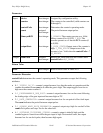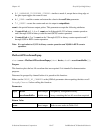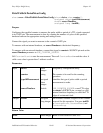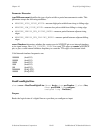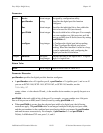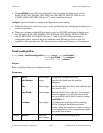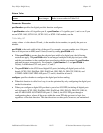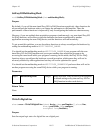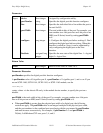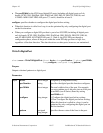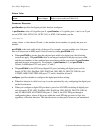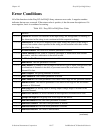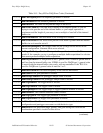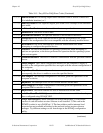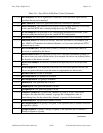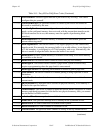
Easy I/O for DAQ Library Chapter 10
LabWindows/CVI Standard Libraries 10-54 © National Instruments Corporation
Parameters
Input
device
short integer Assigned by configuration utility.
portNumber
string Specifies the digital port this function configures.
line
short integer Specifies the individual bit or line within the port to
be used for I/O.
portWidth
short integer The total width in bits of the port. For example, you
can combine two 4-bit ports into an 8-bit port on an
MIO (non E-Series) board by setting portWidth
to 8.
configure
long integer 1: Configure the digital port before writing; 0: Don’t
configure the digital port before writing. When this
function is called in a loop, it can be optimized by
only configuring the digital port on the first
iteration.
lineState
unsigned long
integer
Specifies the new state of the digital line. 1 = logical
high; 0 = logical low.
Return Value
error
short integer Refer to error codes in Table 10-5.
Parameter Discussion
portNumber specifies the digital port this function configures.
A portNumber value of 0 signifies port 0, a portNumber of 1 signifies port 1, and so on. If you
use an SCXI-1160, SCXI-1161, SCXI-1162, or SCXI-1163 module, use the
"SCx!MDy!0"
syntax, where x is the chassis ID and y is the module device number, to specify the port on a
module.
portWidth is the total width in bits of the port. For example, you can combine two 4-bit ports
into an 8-bit port on an MIO (non E-Series) board by setting portWidth to 8.
• When portWidth is greater than the physical port width of a digital port, the following
restrictions apply. The portWidth must be an integral multiple of the physical port width,
and the port numbers in the combined port must begin with the port named by portNumber
and must increase consecutively. For example, if portNumber is 3 and portWidth is
24(bits), LabWindows/CVI uses ports 3, 4, and 5.



